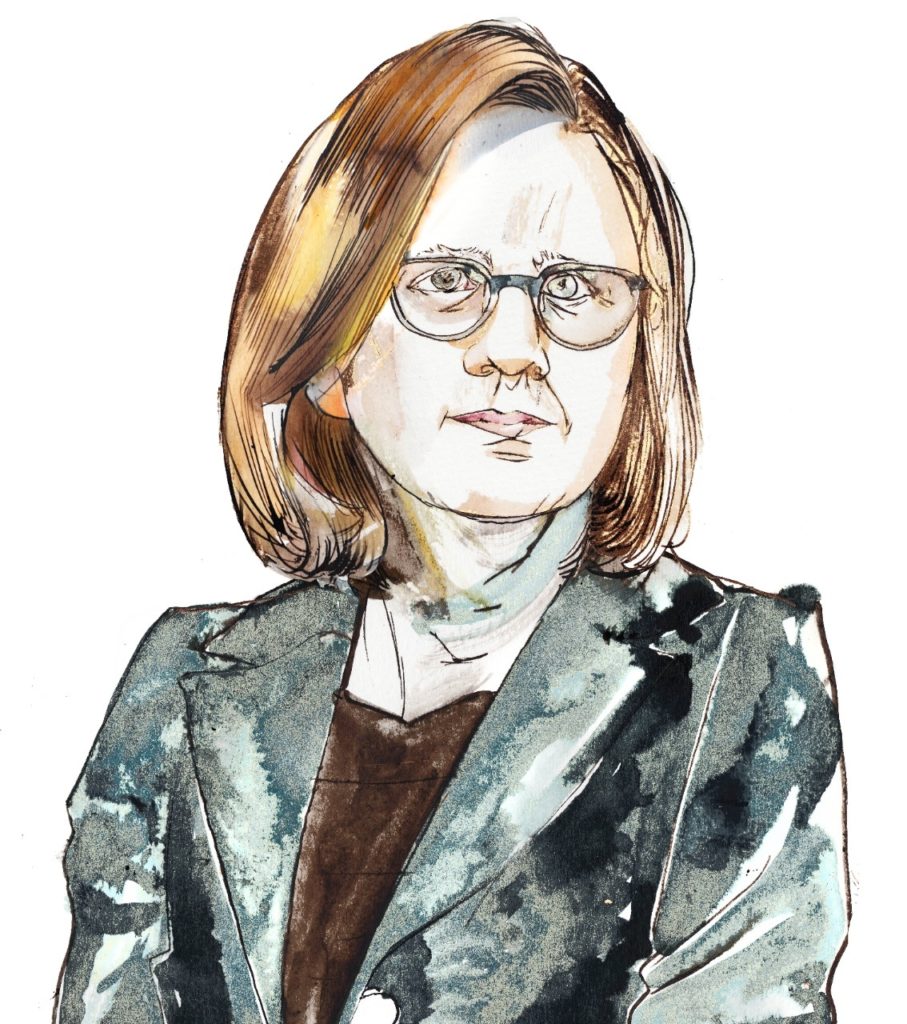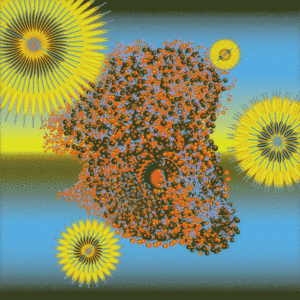‘An extraordinarily humbling event’
In conversation with Santa Clara County Health Officer Sara Cody

Santa Clara County public health chief Sara Cody, MD, was in her kitchen sipping coffee at 6:49 a.m. on Jan. 31 when she received a phone call from a colleague. The number was from the county’s emergency operations center, so she had a feeling the news would be bad. It was.
“Confirmed,” she was told. Santa Clara had its first case of COVID-19.
Cody, a Stanford University biology major who earned her medical degree at Yale and did her residency at Stanford Medicine, has since worked around the clock with a broad coalition of government and community leaders to curtail the impact of the deadly virus on residents.
Cody was the first public health commissioner in the nation to order a countywide shelter in place, which undoubtedly saved lives but was, nonetheless, controversial. As officials continue to weigh the impact of public health orders and restrictions against the social and economic hardships they cause, she admits the balancing act is difficult.
In mid-July, as Cody began a phone conversation with contributing editor Paul Costello, she stopped and offered, “I’m going to take my mask off. I think you’ll be able to hear me better,” before detailing the successes, difficulties and her hopes for the future in the battle against the coronavirus pandemic.
This Q&A is edited and condensed from that conversation.
Costello: Is this moment an inflection point for COVID-19?
Cody: It certainly is. I have to tell you, to be candid, June was an incredibly depressing month for us here in the local response because I had my heart set on full containment. In Santa Clara County, the community came together. For the most part, everybody really was working together. We had our infection rates pretty darn low. We held them low.
We built up the infrastructure that we needed as far as testing, case investigation and contact tracing. I really, honestly, thought in my heart that we were going to be able to get pretty close to identifying enough cases and interrupting enough chains of transmission that we were going to continue to bend the curve down. I really felt it in my heart.
Costello: What happened?
Cody: The rest of the world happened. We’re not an island. We’re not New Zealand. We’re not Taiwan. We are part of a big ecosystem. The rest of the ecosystem was not playing the same, not working from the same playbook.
Costello: Where are the new cases coming from? Do you know?
Cody: I am not sure that I can tell you what’s driving this increase, because it’s not clear to me yet. The truth is that I’m not really sure, because things took off starting in mid-June and really started to accelerate the last week in June.
We saw that pattern here, and a similar pattern in San Francisco, Contra Costa, Alameda, all around the Bay Area. Something happened. It could have been fatigue with shelter‑in‑place, coupled with maybe a little bit of acceleration from Memorial Day weekend gatherings or graduation gatherings. We’ve not had indoor dining, indoor bars, religious ceremonies or things like that. That’s not what’s driving the epidemic here. The honest truth is we don’t quite know.
Costello: Nursing homes and assisted living facilities have been hit hard in Santa Clara County and around the country. Are they in any better shape today than earlier in the pandemic?
Cody: I would say in somewhat better shape. The really critical thing to remember is that we have to be constantly vigilant, because long‑term care facilities and nursing facilities are so vulnerable. If a staff member, or anyone working and caring for patients there, comes in infected and doesn’t know it, the infection can spread to the residents. We see much higher rates of hospitalizations and death there than in any other settings.
The only way we’ve figured out to prevent this is to ensure that staff are frequently screened. If we see a signal, and it doesn’t have to be a very large signal, then we have teams go out and test everyone in the facility, staff and residents.
We are continually seeing the introduction of the virus into skilled nursing facilities and other long-term care facilities. The greater the prevalence in the community, the higher the number of long-term care facilities that pop up with cases. Not surprisingly, the staff represent the community around the facility.
“This has been an extraordinarily humbling and challenging event. We have this system that sometimes feels like it’s made of matchsticks and scotch tape. We’re trying to put this enormous, heavy burden on this pretty underdeveloped infrastructure. Not surprisingly, it breaks.”
Costello: We hear that contact tracing is both challenging and expensive. What’s your experience with it?
Cody: Contact tracing is challenging. Our experience has been mixed. We really had our hearts set on rapidly scaling contact tracing, hoping to identify chains of transmission and really stop them in their tracks by ensuring that contacts quarantined before they became unknowingly infectious.
The part that’s gone well is we have been able to scale the number of staff of contact tracers. We had a plan and built a huge team. Of course, when you build a huge team, go from 0 to 150 in a very short period of time, it’s not all experienced public health workers. The size of the team is twice the size of our entire public health department.
The challenge is that old‑fashioned, shoe leather epidemiology is very high touch, where we’re in the community. We have staff from communities working within their communities to help people understand what’s going on and how to safely isolate or quarantine.
The overall effectiveness of contact tracing, however, depends on being able to reach the contacts and get them quarantined. That has been a real struggle. We’re right in the thick of trying to figure out how well are we doing: Where are the places that we can improve? How do we do it? How fast do we do it?
Costello: After we get through this, what do you want Americans to know and remember about the nation’s public health system?
Cody: This has been an extraordinarily humbling and challenging event. We have this system that sometimes feels like it’s made of matchsticks and scotch tape. We’re trying to put this enormous, heavy burden on this pretty underdeveloped infrastructure. Not surprisingly, it breaks.
We have not invested in public health preparedness or public health infrastructure at all. That’s at every level — federal, state and local. How many public health physicians, public health nurses, community workers and epidemiologists are there in the country? Not that many as it turns out. Not nearly enough.
All of the real basics that you need for public health to do its work — the infrastructure — is very thin everywhere. It’s precisely that infrastructure that we’re relying on to mount the response. I hope that we look back and say, “Let’s learn and let’s invest so that we do better next time.”
Costello: You’ve been going at this 24/7 since January. You mentioned that June was a particularly tough month. I hear in your voice pain. Where does your reservoir of resilience come from, that stamina?
Cody: I like the people that I’m with a lot. I look forward to seeing them. It really is like another family. There’s a real camaraderie and sense of mission, family and respect that’s grown over time. There’s enough drama for a TV series, no question. Yet, it’s a very positive group dynamic that’s developed over time that’s quite supportive and keeps us all humming along.
Costello: You’re a self-described introvert. Taking on this prominent role must be, in some ways, really difficult. What’s it like to have this significant public presence where everything you do is being watched, welcomed, criticized?
Cody: It is uncomfortable. (laughs) Press conferences, television. I just dig deep, find another part of myself and get a lot of support from my colleagues. Everybody has a pretty good sense of humor. That helps a lot. Left to my own devices, I would be very happy sitting alone in a comfortable chair with a good book.
Editor’s note: As of Oct. 6, Santa Clara County health officials reported that, so far, nearly 22,000 people in the county had tested positive for COVID-19 and 345 people had died from the disease.
